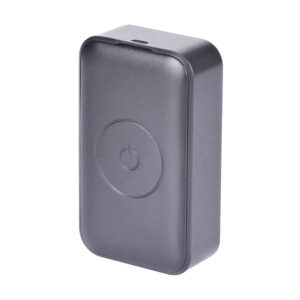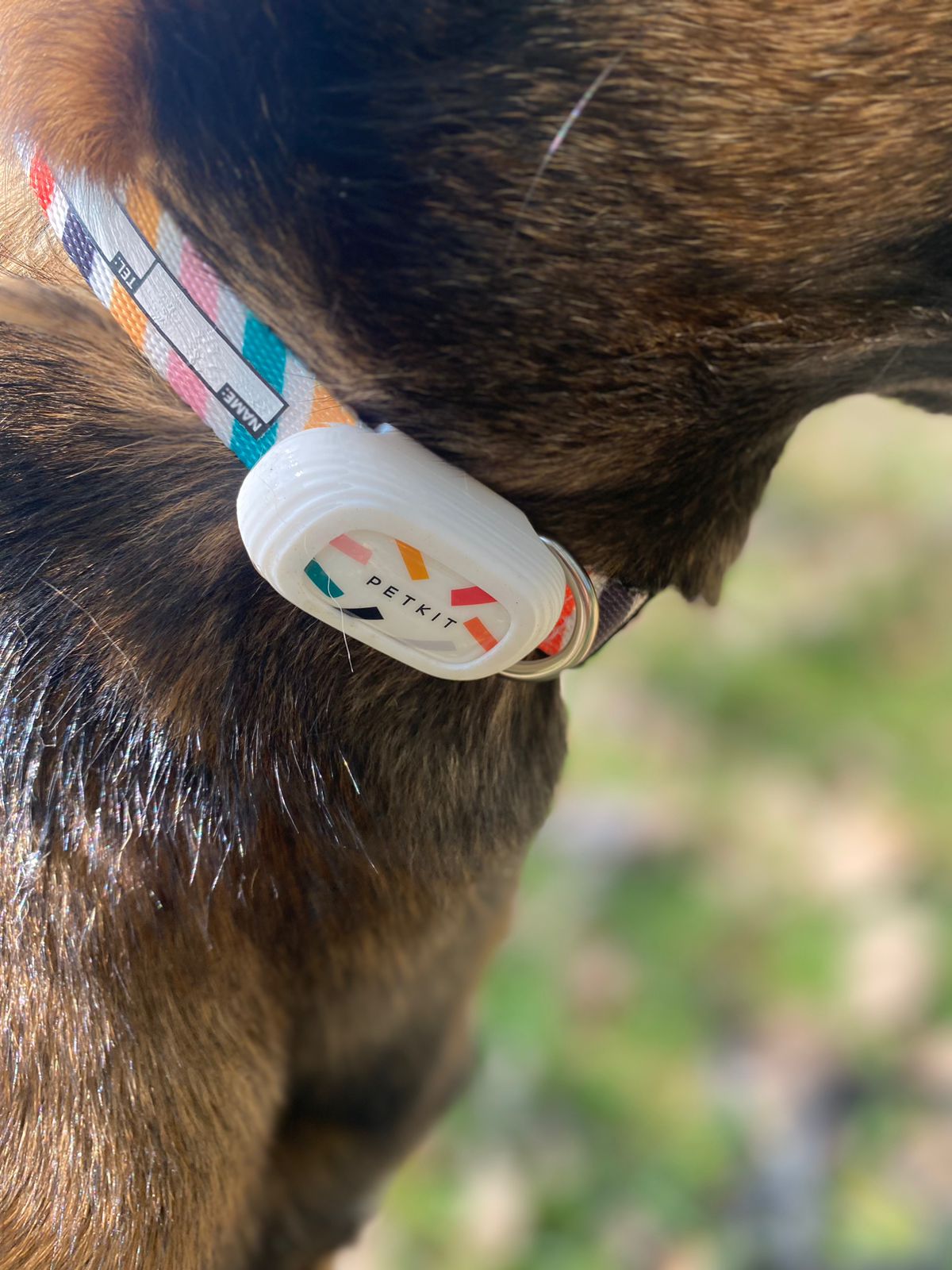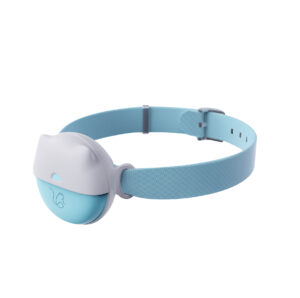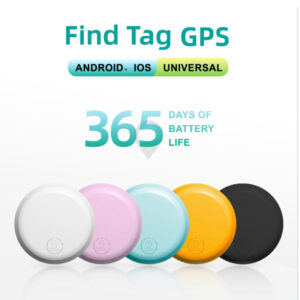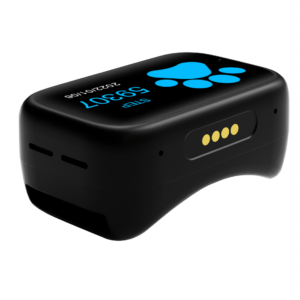AirTag/Galaxy SmartTag vs GPS Tracker with a SIM Card: What’s Best for Pet Tracking in 2025
Apple AirTag and Galaxy SmartTag are Bluetooth trackers (not GPS); dedicated GPS pet trackers use satellites plus a SIM/eSIM for real-time, long‑range tracking.
Should you use an AirTag/SmartTag or a GPS tracker on your pet?
- Quick answer: Use a GPS pet tracker if your dog or cat could ever roam, escape, hike with you, or get lost. Bluetooth tags (AirTag/SmartTag 2) are fine for finding things nearby, but they’re not built for live pet tracking.
- Why:
– Bluetooth tags rely on other people’s phones (Find My/SmartThings networks). Great in dense cities, unreliable in rural areas or late at night. – GPS trackers with a SIM give you real-time location updates almost anywhere there’s mobile coverage.
- Budget tip: If you’re set on a Bluetooth tag, consider a basic Bluetooth-only label for keys and bags. For a pet’s safety, GPS wins.
—
At a glance: Bluetooth tags vs GPS pet trackers
| Feature | AirTag / SmartTag 2 (Bluetooth tag) | Dedicated GPS pet tracker (with SIM) |
|---|---|---|
| How it works | Short-range Bluetooth; location piggybacks on Apple Find My or Samsung SmartThings Find networks; UWB Precision Finding on some phones for close-up locating | GPS satellites for location + mobile data (4G/LTE-M/NB-IoT) to send live positions to your app |
| Range | No fixed range; depends on nearby network users. Excellent at airports/malls, patchy in suburbs, poor on farms/trails | Practical nationwide range where there’s cellular signal; works across towns, farms, trails, travel |
| Real-time updates | Intermittent; only when someone’s device passes nearby | Continuous/live tracking on demand; configurable update rates |
| Accuracy | Close-up: very good (especially with UWB). Elsewhere: varies by crowd density | High accuracy outdoors; consistent pin drops for search and recovery |
| Indoor help | Limited to proximity pings; UWB “arrow” on supported phones | Can combine GPS + Wi‑Fi/BLE beacons for better indoor/nearby accuracy |
| Battery | Months (coin cell) | Days to weeks (rechargeable) depending on model, update frequency, and power saving |
| Size/weight | Very small/light | Small to moderate; cat-friendly options exist |
| Water/dust | Varies by tag/case; many are splash-resistant | Most pet trackers are water-resistant or waterproof; check IP rating on the product page |
| Costs | Low once-off; no subscription | Device + low monthly/annual plan for data and premium features |
| Privacy & safety | Anti‑stalking alerts can notify nearby people and may prompt them to silence/remove a tag | App-controlled sharing; no crowd dependence; your pet won’t trigger third‑party alerts |
| Best for | Keys, bags, indoor cats, pets who stay close | Escape artists, outdoor cats, rural/holiday travel, hiking, real recoveries |
—
How they work (Bluetooth networks vs GPS + SIM)
- AirTag/SmartTag 2: These are Bluetooth trackers designed for belongings. When they’re out of your phone’s Bluetooth range, their last known location updates only when another compatible device passes close enough to “see” them and relay a private, encrypted location ping to Apple’s Find My or Samsung’s SmartThings Find. Newer phones can use UWB (Ultra‑Wideband) for precise “arrow” guidance when you’re near the tag.
- GPS pet trackers with SIM: Purpose-built trackers calculate location via GPS satellites and transmit it over mobile networks (4G/LTE-M/NB-IoT). That means you can actively pull your pet’s live location—no strangers’ phones needed.
Good to know for 2024–2025:
- Galaxy SmartTag 2 improved battery life and durability (including IP rating) and offers a UWB model for compatible Samsung phones.
- Apple AirTag continues to be excellent for locating items in Apple-heavy cities.
- Google’s revamped Find My Device network and cross‑platform unwanted-tracking alerts are rolling out, which helps privacy—but it also means a stranger may be alerted to a tag moving with them, which can undermine using a Bluetooth tag on a lost pet.
—
Range and real-time tracking: Urban vs rural
- Urban/campus/airport: Bluetooth tags can work surprisingly well thanks to lots of nearby devices. Still, updates aren’t truly “live,” and gaps happen.
- Suburbs/rural/farms/hiking: Bluetooth coverage thins out quickly. GPS with SIM shines here, keeping you connected across long distances where it matters most.
If your pet could cross neighborhoods, hop into a car, or wander onto trails, choose GPS.
—
Accuracy and indoor options
- Bluetooth tags: Up close, UWB “Precision Finding” is impressive. But if no one has passed your pet in hours, you won’t have a fresh pin.
- GPS trackers: Typically accurate to a few meters outdoors. For indoor and near‑home accuracy, many systems can use Wi‑Fi positioning and Bluetooth beacons as helpers.
– Pro tip: If you want better in‑home or apartment accuracy with your TailMe GPS, add a BLE beacon near your door or garden. It helps your app understand when your pet is “home.” See our BLE Beacon accessory on the product pages.
—
Battery life and maintenance
- AirTag/SmartTag 2: Months on a replaceable coin cell; minimal upkeep.
- GPS trackers: Typically days to weeks per charge based on update rate and motion. Many offer power‑saving modes, sleep scheduling, and smart wake features to stretch runtime without losing safety.
—
Costs: Upfront vs subscription (and the “no-fee” question)
- Bluetooth tags: Low once‑off cost, usually no subscription.
- GPS trackers: Device cost + a small monthly/annual plan that pays for mobile data, server infrastructure, and premium features (live tracking, trip history, geofences, sharing).
- No‑monthly‑fee trackers: Usually trade live updates and coverage for limited range or delayed updates. For real recoveries, we recommend a SIM‑connected GPS service.
—
Privacy, safety, and unwanted-tracking alerts
- Bluetooth tags: Apple, Google, and Samsung now show cross‑platform alerts if an unknown tag is moving with you. That’s great for people’s safety. For pets, it can be a drawback—someone may silence or remove the tag after getting an alert.
- GPS trackers: Your pet’s location is visible only to you and trusted people you share access with. No crowd network is required, and no alerts are triggered on strangers’ phones.
—
Pet‑specific features that matter
- Live tracking on demand with accurate breadcrumb trails
- Geofences with instant escape alerts
- Waterproofing and rugged housings for rain, puddles, and beach days
- Activity insights and health‑adjacent stats (model-dependent)
- Multi‑user sharing for families, sitters, and walkers
Bluetooth tags aren’t designed with these pet features in mind.
—
Which should I choose?
Use this quick decision flow:
- My pet is strictly indoor, rarely leaves my side, and I mainly want a nudge to check the couch cushions: A Bluetooth tag can be “good enough.”
- My pet is an outdoor cat, an escape‑artist dog, we go hiking, or we travel: Choose a GPS tracker with SIM for live, long‑range tracking.
- I want better indoor certainty with my GPS: Add a BLE beacon near the door to improve “home” detection.
—
Real‑world scenarios
- Urban cat: Bluetooth tags may ping often, but GPS gives you a clean trail through courtyards and side streets when you actually need to search.
- Rural dog on a farm: GPS every time—Bluetooth coverage is too sparse.
- Escape artist: GPS geofences + instant alerts beat waiting for a stranger’s phone to pass.
- Hiking/camping/travel: GPS with multi‑network roaming provides the safety net you want when you’re far from crowds.
- Airport run: Bluetooth tags see lots of pings—but if your dog slips the lead and gets outside the terminal, GPS is the faster way to chase in real-time.
—
Recommended GPS trackers for dogs and cats (TailMe range)
- Agile 4G GPS Pet Tracker: Lightweight everyday tracker for dogs and larger cats; live tracking, geofencing, share with family.
- Infinity Pro GPS Pet Tracker: Premium performance and battery optimization; great for active pets and travel.
- Agile Pro GPS Cat Tracker: Designed with feline wanderers in mind—small, secure fit.
- Infinity 4G GPS Pet Tracker: Robust, water‑resistant build for adventurous dogs.
- BLE Beacon for Infinity Pro & Agile Pro: Adds helpful indoor/near‑home accuracy.
- TailTags – Apple AirTag Compatible: If you still want a Bluetooth tag for keys or very close‑to‑home pets, this is the way to go.
Tip: Check each product page for weight, collar width guidance, water/dust rating (IP), and battery expectations so you can match the right device to your pet.
—
Coverage and compatibility
TailMe GPS trackers use multi‑network connectivity (including modern LTE technologies) for wide coverage. Performance varies by region and signal strength. Traveling? Many plans support roaming—check our coverage notes and plan options at checkout.
—
FAQs
Is Apple AirTag a GPS tracker?
No. AirTag is a Bluetooth tracker that uses Apple’s Find My network. It does not contain a GPS module.
Do Samsung Galaxy SmartTags have GPS?
No. SmartTag and SmartTag 2 use Bluetooth (and UWB on compatible models for close‑range “Precision Finding”). They don’t have built‑in GPS.
How far can an AirTag/SmartTag track a pet?
There’s no fixed range. You’ll only see updates when a compatible device passes near the tag. In busy cities you may get frequent pings; in rural areas you may get none.
Can someone disable my pet’s AirTag/SmartTag?
Modern phones can alert people if an unknown tag is moving with them. A person can play a sound and may remove the battery/holder, which ends tracking.
Do GPS pet trackers need a SIM and subscription?
Yes, in most cases. GPS trackers transmit live locations over mobile networks, which requires data. The plan pays for that connectivity and cloud services.
Which is better for indoor vs outdoor pets?
- Indoor/close‑to‑home: A Bluetooth tag can help you find where a pet is hiding.
- Outdoor/roaming/exploring: GPS wins with real-time tracking, geofences, and reliable range.
Are Bluetooth tags safe on collars?
Use a secure, purpose‑built holder so the tag doesn’t dangle or get chewed. For active pets, we recommend a rugged GPS tracker designed for collars.
—
In our opinion
We always ask one simple question: If my pet gets lost, can I find them?
Bluetooth tags of any kind offer limited, crowd‑dependent updates. A GPS tracker with a SIM is an active solution—you open the app and get your pet’s live location on demand, wherever there’s coverage. For real recoveries, real‑time GPS is the safer choice.
—
Need help choosing the right model for your pet’s size and lifestyle? Reach out to TailTalk Support—we’re happy to recommend the perfect fit.



